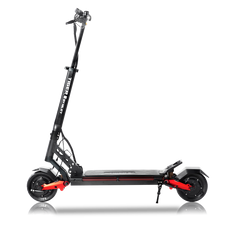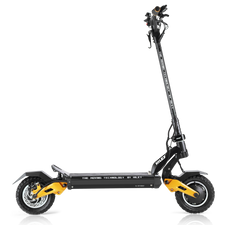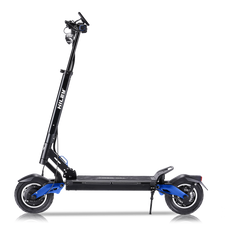Although electric scooters are a lot of fun, they are not cheap. They don't require a lot of maintenance to continue working, but they do require some attention. It is simple to maintain an electric scooter. You can keep your scooter running smoothly for years. You can increase the lifespan of your electric scooter and its batteries with just a few minutes of your time. Avoiding care and maintenance exposes you to breakdown or untimely battery failure.
You can maintain your electric scooter by just following some simple process. Let's take a look at how to maintain your electric scooter:
Electric Scooter Maintenance
You only need a few simple items to keep your scooter in good working order. Allen wrenches (metric), wrenches, a philps head and flat head screwdriver, lubricant, and rags are enough for you that can help you out to maintain your electric scooter.
Cleaning
The first step is to thoroughly clean your electric scooter. You should not hose down your scooter. In general, electricity and water do not mix. Wipe down your scooter with a damp rag to clean it. If you need more, use an all-purpose cleaner spray. Apply a small amount to your scooter and wipe it clean. Repeat as necessary until the scooter is clean. Paper towels and rags can be used.
The goal is to clean your scooter without getting it too wet and to prevent having water in the electronics and batteries.
Lubricants
The scooter's moving parts must be lubricated. A spray lubricant containing PTFE, such as WD-40 Bike Chain Lube, is the best option. This serves as a lubricant as well as a protector. Regular WD-40 should not be used as a lubricant. WD-40 is not a lubricant; it is a penetrating fluid. It will unfreeze frozen joints but will not lubricate them. Learn more about WD-40 in this article. Spray a small amount into the front and rear wheel bearings. Wipe away any excess from the wheels. If your scooter has disc brakes, avoid spraying anything on the brake rotors. The brake pads and rotor surface will be contaminated as a result of this.
Tires
Check the air pressure in your electric scooter's pneumatic air tyres. The recommended air pressures should be written on the sidewalls of the tyres. Keep them inflated to the suggested pressure at all times. Inspect your tyres for damage and wear if they are in good condition.
While you're at it, inspect the tyres for wear. If the tyres have no tread remaining, it is time to replace them.
Brakes
Check the brake pads on your electric scooter for wear if it has disc brakes. If the friction material appears to be nearly gone, it is time for new brake pads. When the scooter is new, it is a good idea to inspect the brake pads. This gives you a baseline for how much friction material they just had to begin with. It is probably a couple of millimetres.
Fasteners And Cables
Check all of the fasteners on your electric scooter to ensure nothing is coming loose. To ensure that everything is snug, use the appropriate allen wrench or regular wrench. Apply a small amount of locktite to any fasteners that keep coming loose. This should keep it tight. Examine the cable housing and fittings for wear and tightness.
Battery Care
If you can replace it, the battery is most likely the most expensive part of your scooter to replace. It is also the area that requires the most attention. There is a famous saying "Most batteries are murdered, not killed."
These are the things that batteries despise:
Overheating
Charging too fast
Overcharging
Discharging too far
Any of the aforementioned actions will shorten the battery's life or cause it to fail.
Nowadays, many scooters use lithium-polymer or lithium-ion batteries. Some are still using lead-acid or nicad/nihm batteries, but they are few and far between.
Lithium batteries must be handled with care. Only use a charger designed for your scooter's battery pack. If a lithium battery is overcharged or charged too quickly, it can catch fire and burn. The flames are hot enough to melt metal and ceramic. You don't want one to set fire to itself. You should not use a connector from someone else's charger simply because it fits.
Always keep your scooter partially charged. If you discharge lithium-ion batteries too far, they will become damaged and will no longer accept a charge. When not in use, lithium batteries slowly discharge over time. They do not self-discharge as quickly as other battery chemistries, but they do discharge. If you ride your scooter until it shuts down due to a dead battery, charge it before storing it.
Never leave an electric scooter charging unattended. You shouldn't connect it to charge and then leave for a few hours, hoping for the best.
Heat can damage the batteries in your scooter. If your batteries are hot after riding your scooter, let them cool down before charging.
Summing Up
As much as we enjoy complicating things, it is always preferable to keep them simple. You must also recognize that you are responsible for maintaining the electric scooter in good working order. Maintaining an electric scooter is not a difficult task if you follow the simple guidelines outlined above it will be an easy task for you to maintain your electric scooter.





